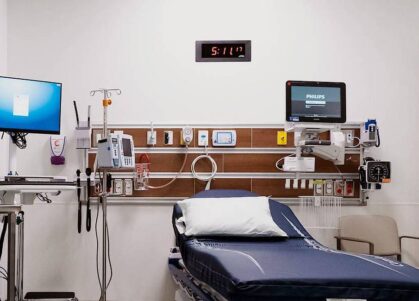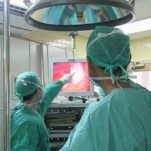The Modern Era
Ambrose Pare, a French surgeon, published important works to spread knowledge. Others developed surgical tools, or ways to cope with infection and disease, such as the 17th century English doctor, Thomas Sydenham.
The term “maxillofacial” came into use in the 19th century, a construct of the Latin maxillo (jaw) and facialis. Although there were exceptions, most early oral and maxillofacial surgeons were doctors, rather than dentists.
Some obtained a dental degree to add to their medical degree, becoming dentally trained oral surgeons. A practice which then became the rule in most countries, where maxillofacial consultants must hold both qualifications.
At the same time as the speciality emerged, anaesthetics improved to widen treatment. Cross profession cooperation began in 1846, a dentist anesthetised a patient, whilst a medical surgeon removed a salivary gland tumour.
Both professions changed to a degree around this time, the first use of the terms “oral surgeon” and “dental surgeon” emerged. A well respected treatise on diseases and surgery of the mouth was published in 1869.
Progress continued to be made in the following decades, although technological development and world events would have a significant impact.
The 20th Century
Understanding of the relationship between the teeth, mouth and general health became more established during the early decades of the 20th century.
The first oral surgery hospital intern was appointed in 1937, the science of disease and infection took significant leaps forward. They all made a difference but two world wars would bring more rapid change.
In the first, doctors began to develop new techniques to deal with blast injuries on a massive scale. To ensure survival and for the first time at a common level, to consider patients future function and appearance.
The second world war saw oral and maxillofacial surgeons emerge as a major speciality. Years of conflict and the aftermath required specialists who could deal with jaw lacerations, fractures, deformity, or dentoalveolar surgery.
Final recognition still took time. Double degree programs began in many countries during the 1970s, or 80s. The British Association of Oral Surgeons became The British Association of Oral & Maxillofacial Surgeons in 1985.
An acceptance of the work leaders in the medical profession had carried out for some time, for their patients and the future of medical science.
Looking Forward
The maxillofacial field has transformed people’s lives and been transformed by technology, from computerisation, to digital imaging. Apart from direct treatment, knowledge and research are shared far faster than in ancient times.
Will we get to the stage where a quick injection of tailored stem cells brings the growth of a fresh body part. Can individual genetic analysis provides the perfect personal cure, or revolutionary medicines eliminate many diseases.
The answer to each is probably yes, although history has proven that the time needed to make such dreams reality is longer than expected. Neither are they likely to be divorced from individual knowledge, or offered by robots.
Technology helps with the shortage of maxillofacial surgeons. International research takes knowledge forward but helping people to return to health works in ways we can not program in.
We believe our consultants will be here to serve you for decades to come. Perhaps the time will arrive where your face is submerged in a cloud of nanobots, for a surgical clean up but so much more will still be needed.


